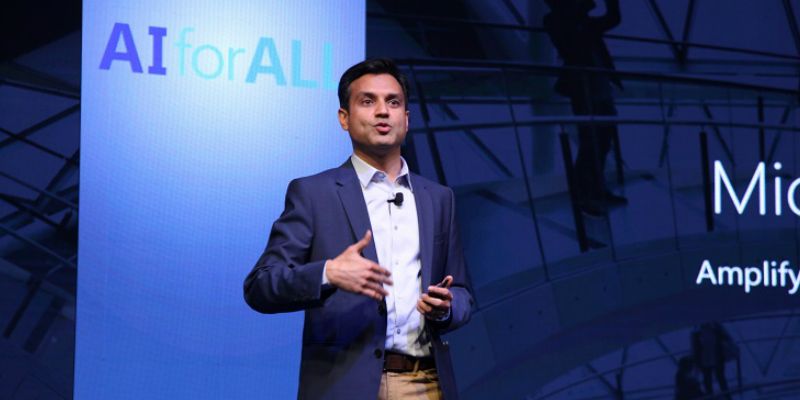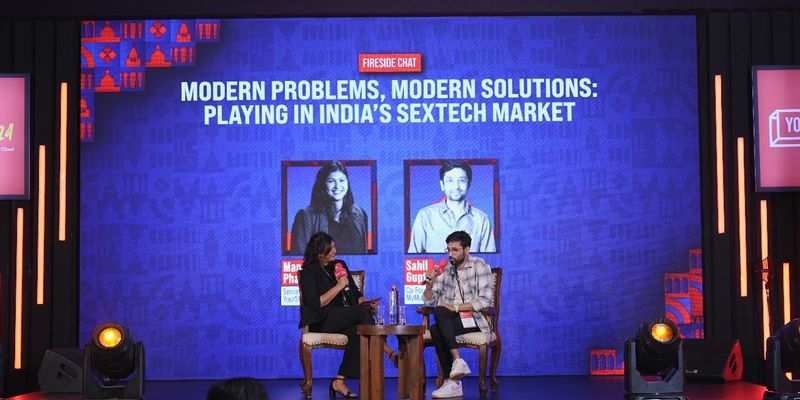As we embrace an AI-powered world, Microsoft stresses need for balance between data intelligence and security
Anant Maheshwari, President, Microsoft India breaks down the nitty-gritty's of Artificial Intelligence and the importance it will play in the world of business.
“Artificial Intelligence (AI) is not just a buzzword anymore. It is something that is on everybody’s fingertips… There is so much happening, and it’s a process of continuous learning for each one of us. I don’t think anyone in the world today has a clear vision of what AI will be in five years, 10 years, 15 years,” noted Anant Maheshwari - President, Microsoft India, as he took the stage at AI for All, Microsoft’s recent event in Bengaluru.
Anant believes that the technology world is at the cusp of making a lot of dramatic changes. Trying to define AI in the simplest terms, he said,
AI is technology that can perceive, learn and reason, to extend the capabilities of people in organisations.

Going deeper into each of the above three words, he explained-
- Perceive – a human element, on images and sounds, especially how to understand them;
- Learn- Another human element that involves learning from interactions and how to get better;
- Reason- “You could say with computing a lot of that has already gone beyond human, but definitely over large amounts of data, to identify patterns.
So, to summarise, there is human ingenuity at the base of AI. Anant noted that if one looks deeper at what drives AI and its foundation, we could distil it down to three things too.
It is data, the cloud and the algorithms that you pull together to drive this. If you just look at the data, it’s unlocking intelligence. It’s unlocking and creating the power of large amounts of data. It is leveraging data sets - not just what you may have, but the data sets that may exist beyond any of our own individual control - the data sets of the world. How do you bring all of that together to unlock intelligence?
Cloud and algorithms are also critical as we need to get all of this data to interact with each other and then create the next level of insight. So a secure, hybrid and protected cloud is critical and Azure is Microsoft’s offering in this regard. Algorithms, are about putting human parity elements into the capabilities that we see as AI. Elaborating on this, Anant said,
So. what’s the real-time translation, what is the capability in terms of providing the plainspoken answers to the questions that anybody may have of a search engine? And, finally, image, speech and natural language adoption and processing.
Anant noted that Microsoft’s data graph is at the foundation of their AI capability and they were blessed to have a combination of datasets that are unique. He said,
“So first up, the world knowledge and the way the world works. About 2.5 billion entities in the world use Bing and there are 148 million users of Cortana, so that’s really the capability of bringing the knowledge of the world into the datasets you may have access to. Work knowledge, that’s the work they attract, and that’s really coming from the presence of Office 365 and Dynamics 365, so roughly about a 120 million users in Office 365 and D365 put together.”
Microsoft is also able to gain individual user data points that come together with the power of Windows and LinkedIn. And that way it comes together again with roughly about a 1.5 billion users accessing those data points.
AI driving businesses
Talking about how AI is driving digital transformation, Anant explained that Microsoft broadly sees three types of scenarios playing out amongst all enterprises -
- Digital agents - interacting with customers (and employees) to transform their capability. How do you empower your employees to do more, how do you connect more with your customers? That’s where the digital agents come in. Forrester has predicted that by 2025, 95 percent of customer interactions will be enabled by bots.
- Intelligent apps - Anant asked, “How do you optimise your operations, how do you create new offerings? That’s where we are on business applications.” He sees a future based on intelligence and data driven by core business applications.
- Business processes - This involves transforming some of a company’s core processes with AI, and that again is infusing existing platforms to bring the capability of AI into them.
Is AI a product, and who is it for?
Anant noted that some of the common thoughts and questions he has heard often are, ‘Is AI a product?’ ‘Is AI something that’ll be really harnessed by some of the biggest companies in the world?’ ‘Who is AI for?’ He explained this, citing an example of Apollo Hospitals, which Microsoft had been working with:
“So, Apollo went through this exercise and found that there are three million heart attacks that happen every year in India, and 30 million people in India suffer from heart diseases.”
They then took the data of 4,00,000 people they had over the last seven years to understand the correlation between medical checks that these people may have come in for, and when the cardiac problems happened. They introspected on questions like, ‘Did we detect them in time?’, ‘How was the care?’ and ‘How was the treatment that we provided to them?’
An interesting datapoint was that 60,000 of those 4,00,000 people had a cardiac incident soon after a check. Anant explained,“So, it did not get detected in the check and therefore there was that capability miss in terms of bringing that person in an emergency situation back to the hospital. Now that’s where you can apply the power of AI very significantly because if you are able to bring data sets together and are able to collect it over a period of time, and also help the patient in a predictive fashion to at least monitor the key vital signs, and have random data models, you can really change the entire healthcare system.”
Anant noted that as we enter a more AI-powered world where decisions are taken by human created algorithms, it is very important that we stick to, and be very, very clear about, the core principles that should be acting at the foundation of everything that we do. He said,
It’s very, very critical; we are entering a world where data privacy and security will become the hottest topics that we will talk about, and in that context, how are we leveraging the power of all of this while retaining our privacy and security concerns? That’s really a balance that needs to be struck with full transparency.
Website- Microsoft











